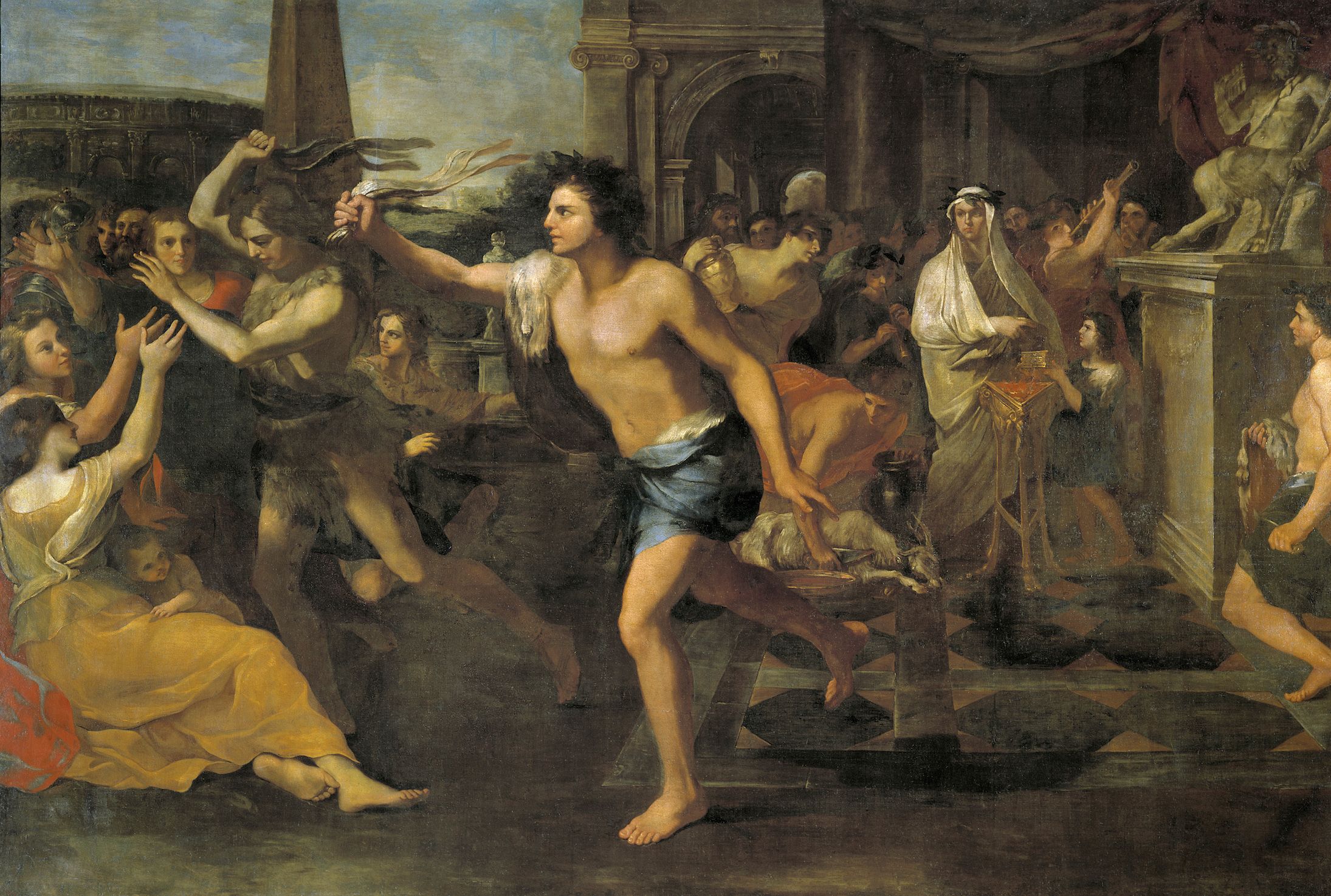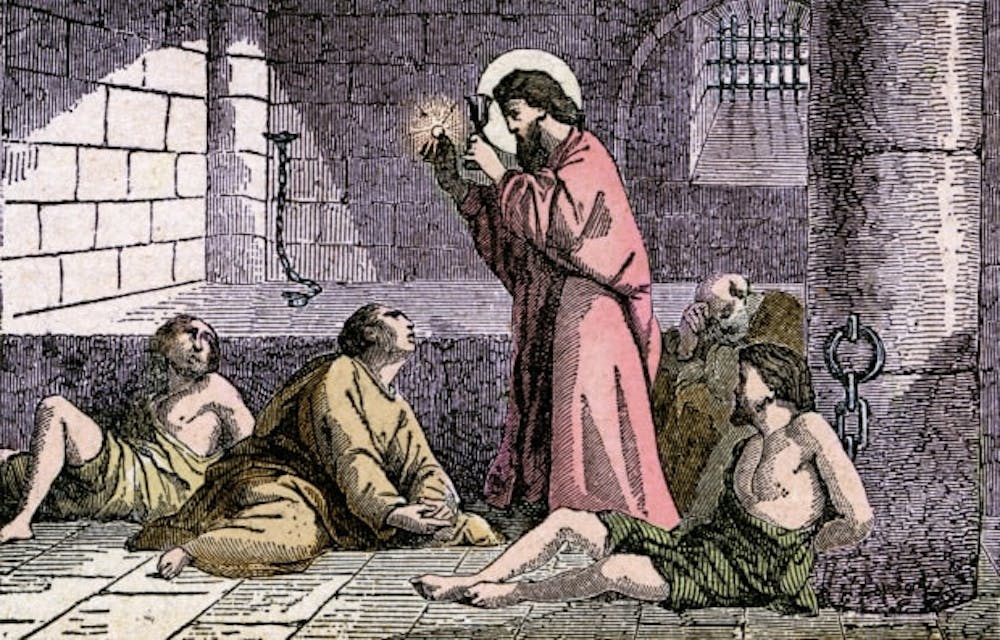by Arianna Sergio Once the Christmas season passes and we bid adieu to jolly St. Nick, the ruby and blush colored rose bouquets, countless brands of heart-shaped chocolate boxes, and colorful plush animals of all types as big as the eye can see start barreling in on the shelves. Tis’ the season for the only day of the year where it's socially acceptable and celebrated to be super corny and mushy with your lover. This day practically oozes affection. This kind of love is a challenge to flee from when it surrounds every move you make throughout February, so the majority of people either completely love it or completely hate it. I have certainly flip-flopped from one side to the other, but something that remains a burning question in my head is how did Valentine’s Day become a holiday?
Lupercalia and St. Valentine
[caption id="" align="alignright" width="414"] Image from Mental Floss[/caption]
This story kicks off with the earliest origin of Valentine’s Day: the pagan holiday Lupercalia. This holiday, which celebrates fertility, took place for centuries in mid-February. Lupercalia was one of the few pagan holidays that was celebrated 150 years after Christianity was legalized, showcasing how popular and influential it was within the Roman Empire.
[caption id="" align="alignright" width="413"]
Image from Mental Floss[/caption]
This story kicks off with the earliest origin of Valentine’s Day: the pagan holiday Lupercalia. This holiday, which celebrates fertility, took place for centuries in mid-February. Lupercalia was one of the few pagan holidays that was celebrated 150 years after Christianity was legalized, showcasing how popular and influential it was within the Roman Empire.
[caption id="" align="alignright" width="413"] Image from Catholic Online[/caption]
At the end of the fifth century, Pope Gelasius became the new pope and stopped anyone from celebrating Lupercalia. Shortly after he announced this, the Catholic church made Feb. 14 their feast day to celebrate the martyred St. Valentine. I have to preface that in the early martyrologies three various St. Valentine’s are discussed, all sharing Feb. 14 as their feast day, and because the historical records are very few and scattered no one can wholeheartedly confirm who the “real” St. Valentine is. The first St. Valentine was a priest who doubled as a doctor. He not only educated the fellow Christians in his community to follow Jesus, but he also aided people who were sickly. St. Valentine was a publicly recognized leader in his Christian community, and at the time Christians were tormented for their faith and were highly sought after and jailed, so he eventually became jailed and then beheaded. The second St. Valentine was a Bishop of Terni, then known as Interamna, and he also became jailed and then beheaded. The third St. Valentine suffered martyrdom with many others in Africa, but nothing else is known about him. Some believe that all of these versions of St.Valentine are the same person, but that hasn’t been confirmed.
Image from Catholic Online[/caption]
At the end of the fifth century, Pope Gelasius became the new pope and stopped anyone from celebrating Lupercalia. Shortly after he announced this, the Catholic church made Feb. 14 their feast day to celebrate the martyred St. Valentine. I have to preface that in the early martyrologies three various St. Valentine’s are discussed, all sharing Feb. 14 as their feast day, and because the historical records are very few and scattered no one can wholeheartedly confirm who the “real” St. Valentine is. The first St. Valentine was a priest who doubled as a doctor. He not only educated the fellow Christians in his community to follow Jesus, but he also aided people who were sickly. St. Valentine was a publicly recognized leader in his Christian community, and at the time Christians were tormented for their faith and were highly sought after and jailed, so he eventually became jailed and then beheaded. The second St. Valentine was a Bishop of Terni, then known as Interamna, and he also became jailed and then beheaded. The third St. Valentine suffered martyrdom with many others in Africa, but nothing else is known about him. Some believe that all of these versions of St.Valentine are the same person, but that hasn’t been confirmed.
Why is it associated with love?
There are copious theories as to why the holiday is associated with love. A few of the most popular being: that in the Middle Ages in France and England it was commonly believed that Feb. 14 was the beginning of birds’ mating season, which added to the idea that the middle of Valentine’s Day should be a day for romance; St. Valentine signed a letter that ended with “from your Valentine,” to his jailer’s daughter, who he fell in love with and healed from being blind to a certain degree; and lastly St. Valentine opposed Emperor Claudius II commands and, in secret, married couples to pardon the husbands’ from war. All of these beliefs can provide us with some sort of idea to entertain, since none of us will for sure know what the “real” reason is. Next time you are shopping at your local grocery store purchasing some of the discounted limited edition Valentine’s Day treats, you can ponder about the mysterious theories that surround St. Valentine, why the pink and red doused holiday is celebrated for love, and how it came to be what it is today.Sources: BBC, Britannica, Catholic Education, History, National Geographic, Saints Resource, Images: Catholic Online, Mental Floss Featured Image: History



















